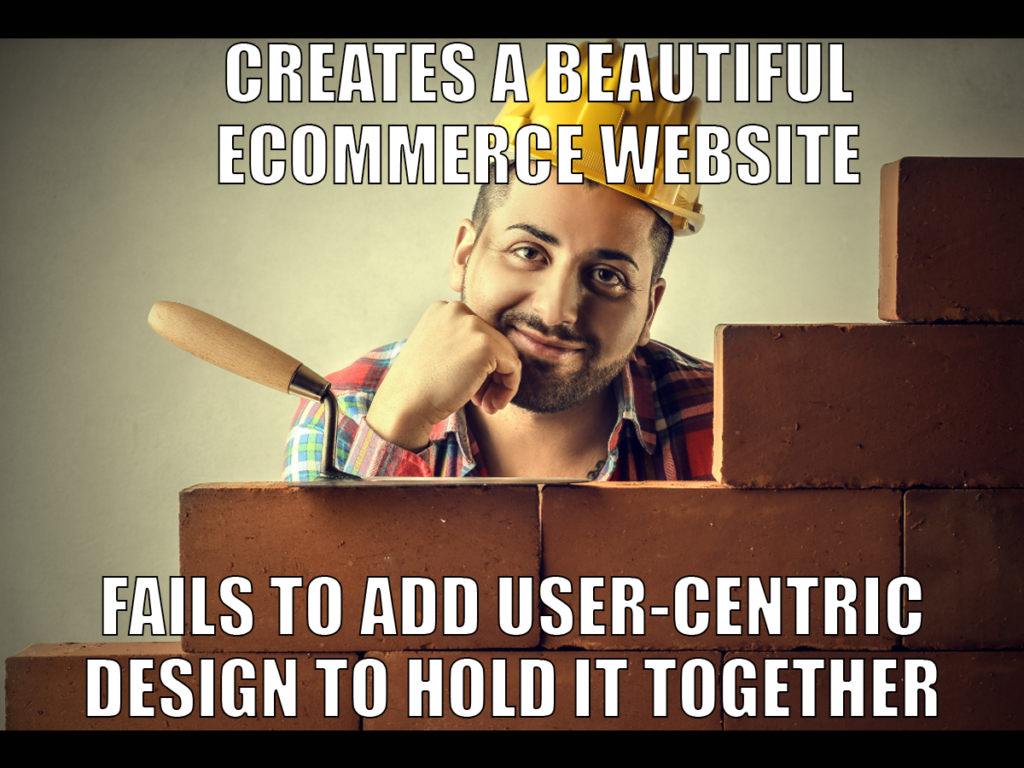5 Revolutionary Ways to Win the B2C E-Commerce Usability Game in 2024

In the fast-paced world of eCommerce, where competition is fierce and attention spans are fleeting, the usability of your website can make all the difference between success and obscurity. As an eCommerce business owner, you understand the importance of providing a seamless and enjoyable shopping experience for your customers. In this guide, we’ll delve deeper into the essential aspects of usability and explore how you can optimize your B2C retail eCommerce website to engage visitors, drive conversions, and foster customer loyalty.

#1 Build a Great Foundation on User-Centric Design
Prioritize User Needs
Before diving into the intricacies of website design and functionality, it’s crucial to understand your customers needs, preferences, and pain points. Conducting thorough user research through surveys, interviews, and usability testing allows you to uncover valuable insights that will inform your website’s design and feature set. By empathizing with your target audience and addressing their specific challenges, you can create a user experience that resonates with them on a deeper level.
Content Readability: Enhancing Clarity
Enhance readability and comprehension by using legible fonts, appropriate font sizes, and ample white space to present content clearly and concisely. Clear and well-formatted content not only improves user engagement but also enhances the overall usability of your website by making it easier for users to consume and understand information.
Accessibility: Ensuring Inclusivity
Ensure that your website is accessible to users of all abilities by implementing features like alt text for images, keyboard navigation, and compatibility with screen readers. Accessibility not only enhances the user experience for individuals with disabilities but also improves usability for all users by making your website more intuitive and easy to navigate.

#2 Create a Seamless User Experience Across Devices
Mobile Optimization: Tailoring the Experience
Tailor the user experience specifically for smartphone users by implementing mobile-friendly navigation, touch-friendly buttons, and streamlined content layout. With mobile devices accounting for an increasing share of online traffic, optimizing your website for mobile users is essential to providing a seamless and enjoyable browsing experience across all devices. Before you go completely crazy – See where your audience is engaging from. You don’t want to fully neglect your desktop design especially if a majority of your customer base is still using a desktop computer. Mobile-first can be compatible with both desktop and smaller devices.
Responsive Design is Key
In today’s mobile-first world, responsive design is non-negotiable for eCommerce websites. With consumers increasingly using smartphones and tablets to browse and shop online, ensuring that your website is optimized for various screen sizes and devices is essential. Responsive design allows your website to adapt seamlessly to different viewport sizes, providing users with a consistent and enjoyable browsing experience across desktops, laptops, smartphones, and tablets.

#3 Make your site Discoverable and Build Trust
Search Optimization: Empowering Users with Relevant Results
A robust search function acts as a beacon for users seeking specific products or information, akin to a knowledgeable store clerk guiding shoppers to desired items. Implement intelligent search capabilities that deliver accurate and relevant results, utilizing autocomplete and filtering options to enhance usability. By empowering users to quickly locate desired content, you demonstrate a commitment to their needs and preferences, fostering a sense of trust and reliability in your brand.
Trust and Security: Building Confidence
Establish trust with your audience by implementing trust signals such as customer reviews, secure payment options, SSL certificates, and transparent privacy policies. Building trust and confidence in your brand not only improves user satisfaction but also increases conversion rates and fosters long-term customer loyalty.
Code Quality and Error Reduction: Enhancing Reliability and Trustworthiness
Behind the scenes, meticulous attention to code quality and error reduction plays a crucial role in maintaining site reliability and trustworthiness. Conduct thorough testing and debugging processes to identify and rectify coding errors, broken links, and other technical issues that may impede user experience. By prioritizing code integrity and error prevention, you minimize the risk of user frustration and distrust stemming from site malfunctions or glitches. A seamless browsing experience, free from errors and disruptions, fosters trust in your site’s reliability and professionalism, encouraging users to engage with confidence.

#4 Streamline the Shopping Journey
Optimize Navigation and Site Structure
One of the cornerstones of a user-friendly website is intuitive navigation and a logical site structure. Just as a well-organized store layout makes it easy for shoppers to find what they’re looking for, a clear and streamlined website navigation ensures that visitors can quickly locate products, categories, and other essential information. Invest time in designing user-friendly menus, categorizing products effectively, and implementing search functionality that helps users find what they need with minimal effort.
Search Matters – A Lot
The search function on your eCommerce website is akin to a helpful store employee who guides customers to the products they seek. Implementing a powerful and intelligent search feature not only simplifies the shopping process but also enhances user satisfaction and increases the likelihood of conversion. Ensure that your search function delivers fast and accurate results, offers autocomplete suggestions, and provides relevant product recommendations to users as they type their queries.
Checkout the Checkout (And Cart)
The checkout process is the final frontier of the eCommerce user journey, and optimizing it for simplicity and convenience is paramount. Provide users with a clear and transparent cart overview, accurate pricing information, and secure payment options to instill confidence and minimize cart abandonment. Offering guest checkout, simplifying form fields, and providing progress indicators can further streamline the checkout process and encourage users to complete their purchase.

#5 Performance and Feedback
Feedback and Support: Empowering Users
Provide avenues for user feedback and support through features like live chat support, contact forms, and feedback surveys to gather insights and address user concerns effectively. By actively listening to your users and addressing their feedback, you can continuously improve the usability of your website and enhance the overall user experience.
Refining the User Experience
Usability testing stands as a cornerstone in the quest for crafting exceptional user experiences in the realm of B2C retail eCommerce. By subjecting your website to rigorous testing protocols, you embark on a journey of refinement, continually honing and optimizing every aspect of the user journey. Through usability testing, you gain invaluable insights into how real users interact with your website, uncovering pain points, friction areas, and areas of confusion that may otherwise go unnoticed.
Armed with this knowledge, you can iteratively enhance your website’s usability, making informed decisions to streamline navigation, improve accessibility, and optimize conversion pathways. Usability testing empowers you to walk in the shoes of your customers, experiencing firsthand the highs and lows of their journey, and ultimately delivering a more intuitive, seamless, and delightful online shopping experience.
Using A/B Testing as an Iterative Evolution for Optimal Performance
A/B testing, also known as split testing, emerges as a potent tool in the arsenal of eCommerce website optimization. Through the real-time comparison of two or more variations of a webpage, A/B testing allows you to empirically evaluate which design, layout, or content elements resonate most effectively with your audience.
By randomly assigning visitors to different versions of a webpage and measuring key metrics such as click-through rates, conversion rates, and bounce rates, you can discern which iteration yields superior results. And guess what – you don’t have to be a coder to do basic A/B testing – this can easily be done using a tool like VWO or Optimizely which provides a WYSWYG style platform to test elements on your web page in real time!
This iterative approach empowers you to fine-tune every aspect of your website, from button colors to product descriptions, based on concrete data rather than assumptions or guesswork. A/B testing fosters a culture of continuous improvement, where every iteration brings you closer to unlocking the full potential of your eCommerce platform. With each test iteration, you gain deeper insights into customer preferences and behavior, enabling you to refine your website’s design and functionality to perfection.
